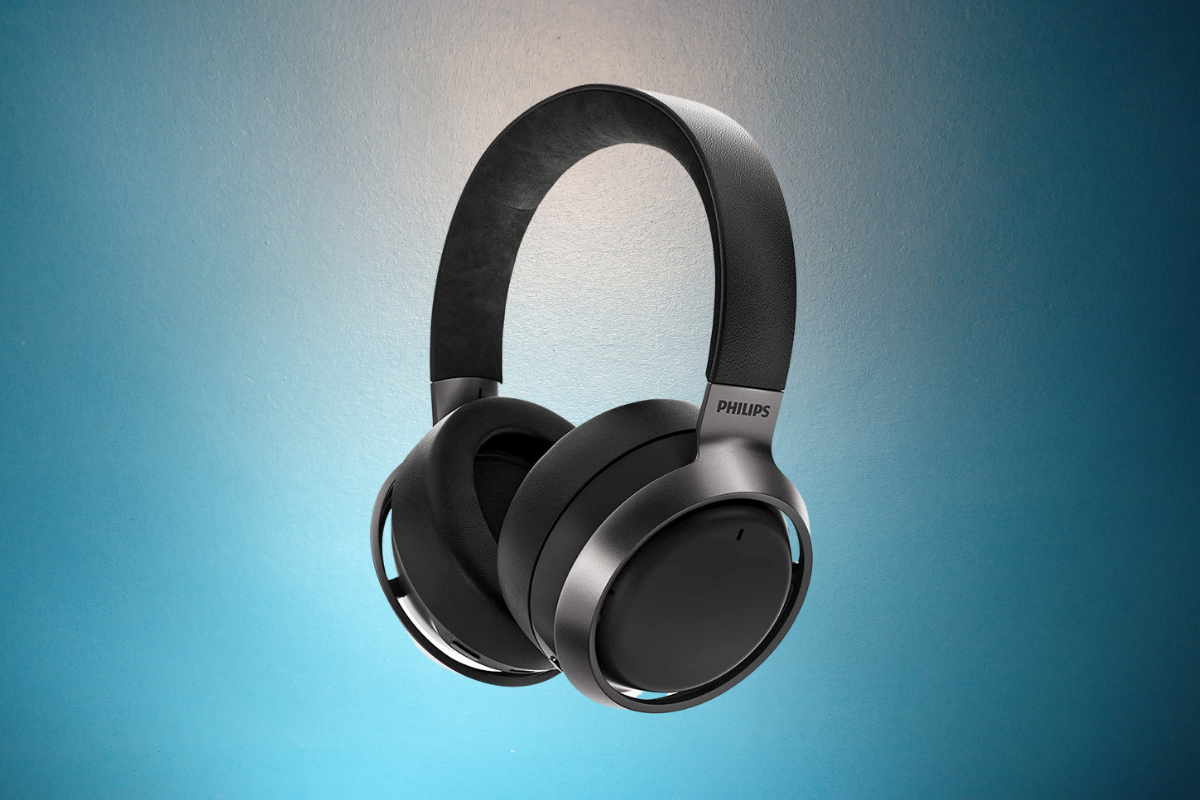TL;DR
The Fidelio L3’s excellent build quality, detailed sound, long battery life, and superb noise canceling are somewhat let down by so-so comfort and touch controls that take some getting used to.
Intro
Wireless noise-canceling headphones are a dime a dozen at this stage in the game, but very few are marketed to audiophiles.
However, with their $349 Fidelio L3 Headphones, Philips promises to provide the perfect listening environment no matter where you go due to 40mm bespoke drivers and high-quality noise canceling. They also tout the natural, balanced sound as a step above other ANC headphones.
So is the Fidelio L3 the best choice for audiophiles looking for a wireless headphone option? Read on, and I will let you know what I think! Disclaimer: The L3 unit I have on hand is provided by Philips in exchange for this review. No input has been given regarding the content contained in this evaluation.
Build/Features
To start with, the Philips Fidelio L3 has a remarkably luxurious build. I knew I wasn’t dealing with your run-of-the-mill wireless headphone from the moment I picked them up.
The heavy-duty aluminum ear cup rings, high-quality plastic, and Scottish Muirhead leather trim make them stand out from the (mostly) plastic competition. The memory foam earpads are both soft and supportive. In addition, the earcup sliders seem sturdy with their thick metal reinforcement.

However, the robust build makes them a bit heavier than other headphones I’ve used, and I found the clamp just a bit too tight. I also didn’t like how limited the swivel was on the earcups. This made them rest awkwardly on my head, which took away from the overall comfort. Wearability was just ok for me.
Now, I have to say, part of this was probably due to my huge head (7 7/8 hat size). Those with smaller heads may have a better experience in this regard.
Ergonomics are also a mixed bag, as the large touch control pad on the right earcup takes some getting used to. Up and down swipes control volume, while front and back swipes control track forward/back. In addition, a tap in the center controls play and pause.

At first, I triggered the wrong function (pausing the music instead of volume up, for example) about half the time, but I got better after a week or so. That said, I still haven’t been able to get the correct function to happen 100% of the time.
Besides the touch controls, there are a few buttons on the bottom of the earcups, including a button for ANC on/off, a button for voice assistant (Alexa, Google Assistant) selection, plus a button for power on/off. Along with that, the Fidelio L3 has wear sensors built-in, which allow you to start and stop the music just by taking them off or putting them on.
Alongside the buttons on the earcups, there’s a USB-C charging port, an opening for the headset mic, and a 3.5mm jack for wired listening with the included headphone cable.

The companion Phillips Headphone App (iOS and Android) is laid out nicely and provides additional functionality like an EQ (5 presets plus a custom option) and an ANC strength slider. It also lets you check the battery life percentage.
Speaking of battery life, the L3 is strong in that regard, lasting throughout the day, even with the ANC turned on. Moreover, charging time is pretty fast, taking 2 hours to charge fully.
By the way, the L3’s Active Noise Cancelling is some of the best I’ve heard, almost totally knocking out both high-pitched environmental noise like HVAC sounds and low-pitched voices. This is partly due to the excellent passive noise canceling provided by the headphones themselves.

Similarly, I found the ambient sound mode, responsible for bringing in outside noises with the headphones on, to be pretty good, allowing me to hear my surroundings satisfactorily. That said, the listening experience wasn’t as natural as I would like since it sounded like I heard things through a filter of sorts.
Bluetooth 5.1 makes for quick connections, and I had no problem connecting the headphones to my Samsung Galaxy S21 Ultra phone within seconds. I also had no issue with signal drops except when I was at the extremes of the operating range.

The L3 is also compatible with Google Fast Pair, which lets you pair with a single tap on the screen if your phone is compatible. It also has dual connectivity so that you can connect to two Bluetooth devices simultaneously. That way, you can take calls from your phone while playing music on your laptop.
When it comes to BT Audio Codecs, the Fidelio L3 uses ACC, aptX, and aptX HD, which is fine, but I wish they had LDAC, the standard high-bandwidth (hi-res) codec for Android.

As far as accessories go, you get the aforementioned headphone cable, a USB-C to USB-A charging cable, a two-prong airplane adapter, and a hard-sided protein leather carrying case. No complaints there.
Sound
I played some music from my Fiio M11 Plus LTD digital audio player via Qobuz using the aptX HD codec for my sound tests.
Phillip advertises the Fidelio L3 as having a Natural, Balanced Sound, with bass that is “tight and impactful without being overpowering.” They also promote the midrange as “full and smooth” along with highs that “sparkle with detail.”
When it comes to treble detail, I agree wholeheartedly with their description, as the Fidelio L3 may be the best wireless ANC headphone in this regard. This headphone has remarkable detail and air up top, which provides excellent resolution.

I also agree with their midrange description for the most part, as I found the L3 to have vibrant and detailed mids that made vocals and instruments sound natural. My only knock would be a bit of bass bloom in the lower mids that caused some coloration in some male vocals and lower-range instruments. This was noticeable on hip-hop tracks and other songs with heavy bass.
That leads to my main issue with the L3’s tuning, and that would be a little too much boost in the upper bass. I found it distracting on certain genres like Jazz or Blues, where I wanted to hear the intricacies of a particular piano part or a jazz vocal, and there was just a little too much energy in the rhythm part.
I liked the boost in the sub-bass region as it added some nice weight and depth to the low end. It also aided in the dynamics, which were full and provided speed and excitement to the presentation.

The soundstage width was decent but not great, as the stage barely reached beyond the ears. Since these headphones have good resolution, imaging is good, with a nice separation between elements. I just wish there was a little bit more spaciousness in the presentation.
Listening to “Babylon Sisters” by Steely Dan, I was impressed by the naturalness and detail of the strings, as well as the lead vocal. In addition, I loved the separation of the various instruments and vocal parts, even though I wished they were spread out a little more.
On the other hand, I found the rhythm part slightly exaggerated due to the upper and mid-bass boost.
The Wrap Up
In conclusion, I found the Phillips Fidelio L3 Headphones to be well built with nicely detailed sound and superb active noise canceling. They also have lighting fast pairing, and great battery life. On the other hand, I thought comfort was an issue (partially due to my head size), and I found the touch controls hard to operate at times. In addition, I found the L3’s upper/mid-bass boost to be somewhat distracting.
If you’re an audiophile with a smaller head looking for wireless headphones with good noise-canceling, you should check these out.
Hifitrends is reader-supported. When you purchase through links on our site, we may earn an affiliate commission. Prices are subject to change at any time.

I’m an audio writer who started as a young audio salesman/consumer electronics professional back in the late 90s. That’s where I discovered the magic of 2-Channel sound. My hunger for great sound has led me on a delightful music quest that continues today.



Leave a Reply